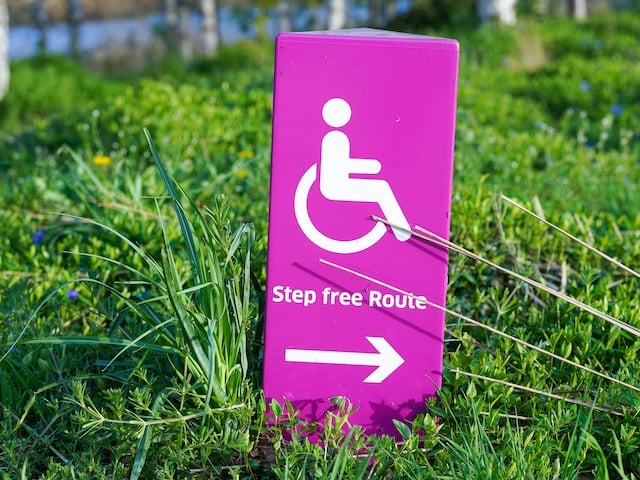Entertainment
Essentials
News
News & Events
Podcasting Essentials
Related articles:
Sounds Profitable and Edison Research have published "The Creators," an inaugural report on podcast creators. This marks a rare first in the space–surveys have historically focused only on understanding consumer audiences. In an industry often lauded for its accessibility (see the refrain of “a low barrier to entry,”) “The Creators” provides a moment for hard reflection: Are the people behind the podcasts as diverse as people claim? What does this mean for the medium's future growth? We’ve collected some of the main takeaways from the study below:
Basic Demographics
At first glance, the people making podcasts are who you might expect. Compared to the general U.S. population, self-identified podcast creators (from here on, “creators”) are more likely to be men between the ages of 25-44 who have at least a four-year college degree. Nearly half of creators have some form of advanced degree, compared to less than a tenth of the general population. Creators are also more likely to have full-time jobs and live in high-earning households (38% have a household income of more than $100,000/year, compared to 22% of the general population,) and nearly half currently work from home.
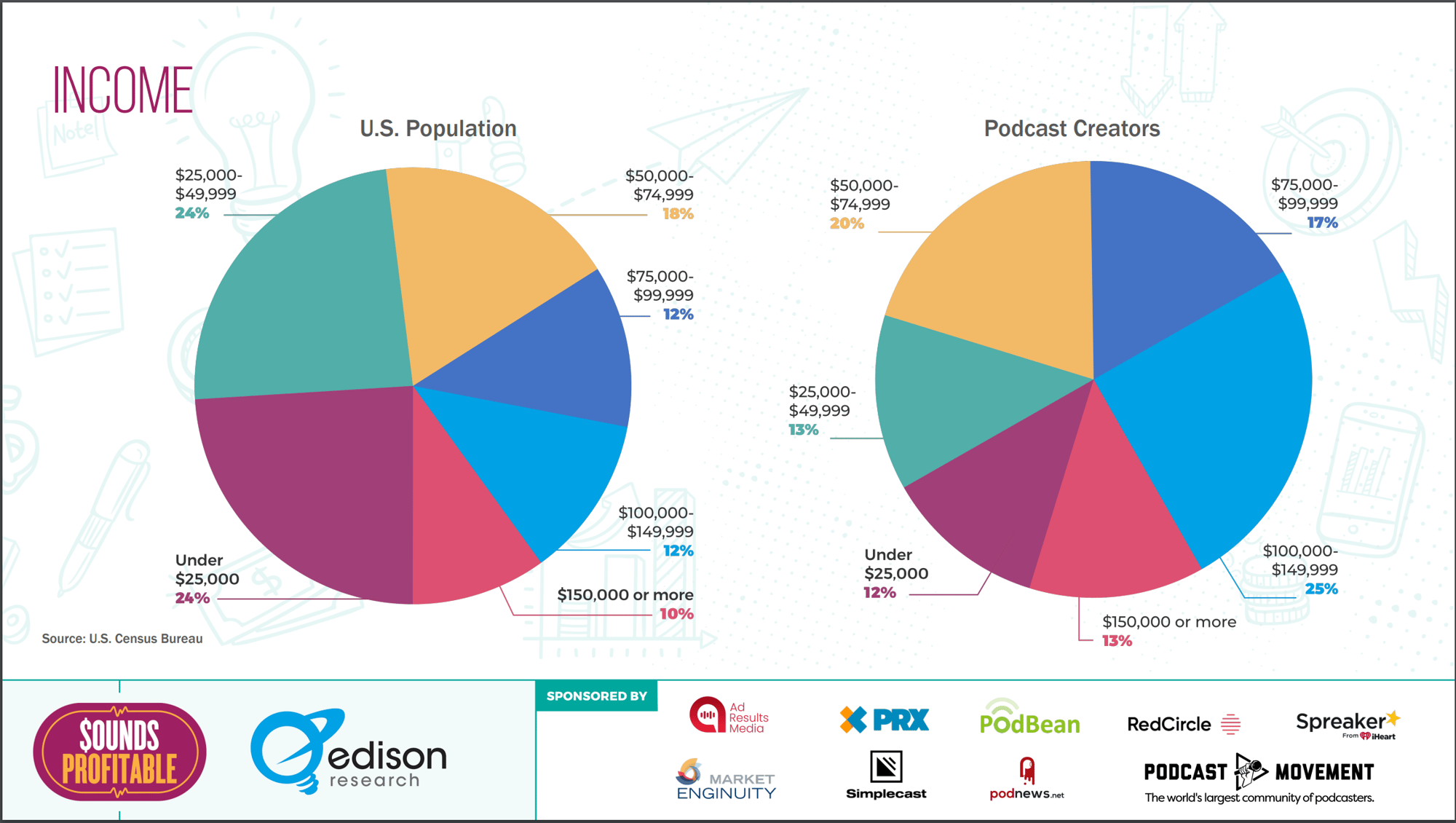
Most of this isn’t particularly surprising; many of these factors would naturally lend a person more time, energy, and resources to podcast, particularly as a side initiative from their day job. But the report also reveals the groups of people that are getting left behind. Just 2% of creators are 55+ years old, a major deviation from the almost one-third of the U.S. population that lands in this age range. Similarly, people from households that make less than $50,000 a year only make up a fourth of the creator population, despite accounting for half of U.S. residents. These statistics call into question the so-called accessibility of the medium; if the barrier for entry is as low as people claim, should such a big discrepancy across economic and class lines exist?
Still, this doesn’t mean minority groups are completely shut out. Creators are more likely to identify as Latinx and proportionally identify as African-American. They’re also less likely to identify as white.
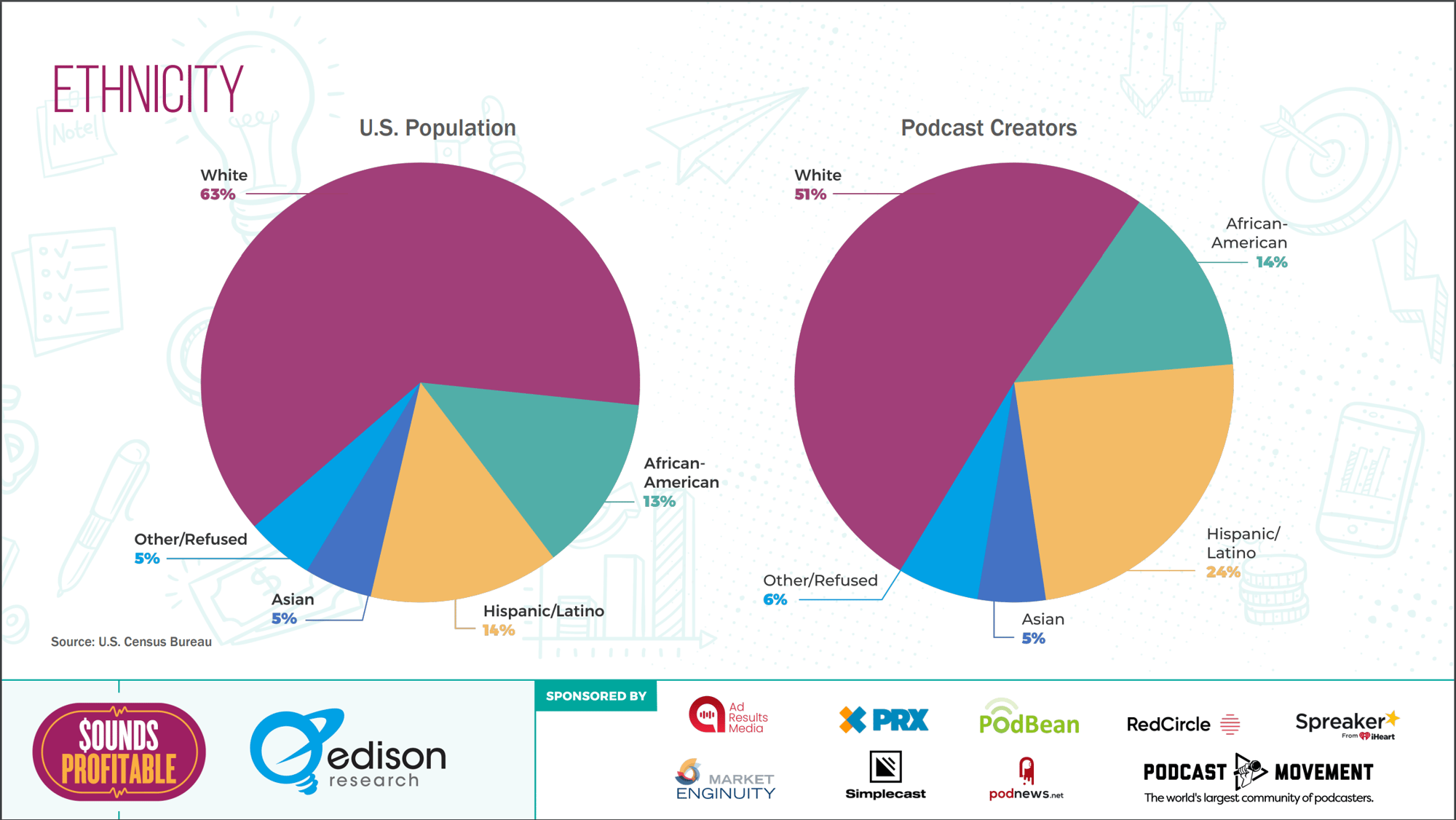
Nonbinary creators (and/or creators who identified as “Other” over “Men” or “Women”) make up 2% of the pool, compared to just 0.3% of U.S. adults (as of 2021.)

Listening Habits
Despite the “logical” assumption that creators are likely to listen to podcasts more than other listeners, the reality is that they’re no more avid consumers than your average weekly podcast listener, clocking in approximately an hour extra per week. The report attributes this extra time to creators listening to their own episodes. Around two-thirds of creators have gotten their kids also listening to podcasts, potentially increasing relative listening time per household and seeding a future generation of audiences.
Comedy tops the genre charts for both creators and listeners, but there’s a sharp disjunction between the rest of both lists. Technology, Science, Drama, and Fiction draw a larger creator audience share, while categories like Society & Culture and True Crime, though popular among all weekly listeners, are less desirable. (Listening trends do not necessarily correlate to the genres of the podcasts being made.) The report proposes that this genre discrepancy is due to economical and ideological biases prevailing among creators.
Of note: Almost half of creators have been listening to podcasts for less than a year, signifying that podcast creation is a rich potential entry point for new, consistent listeners.
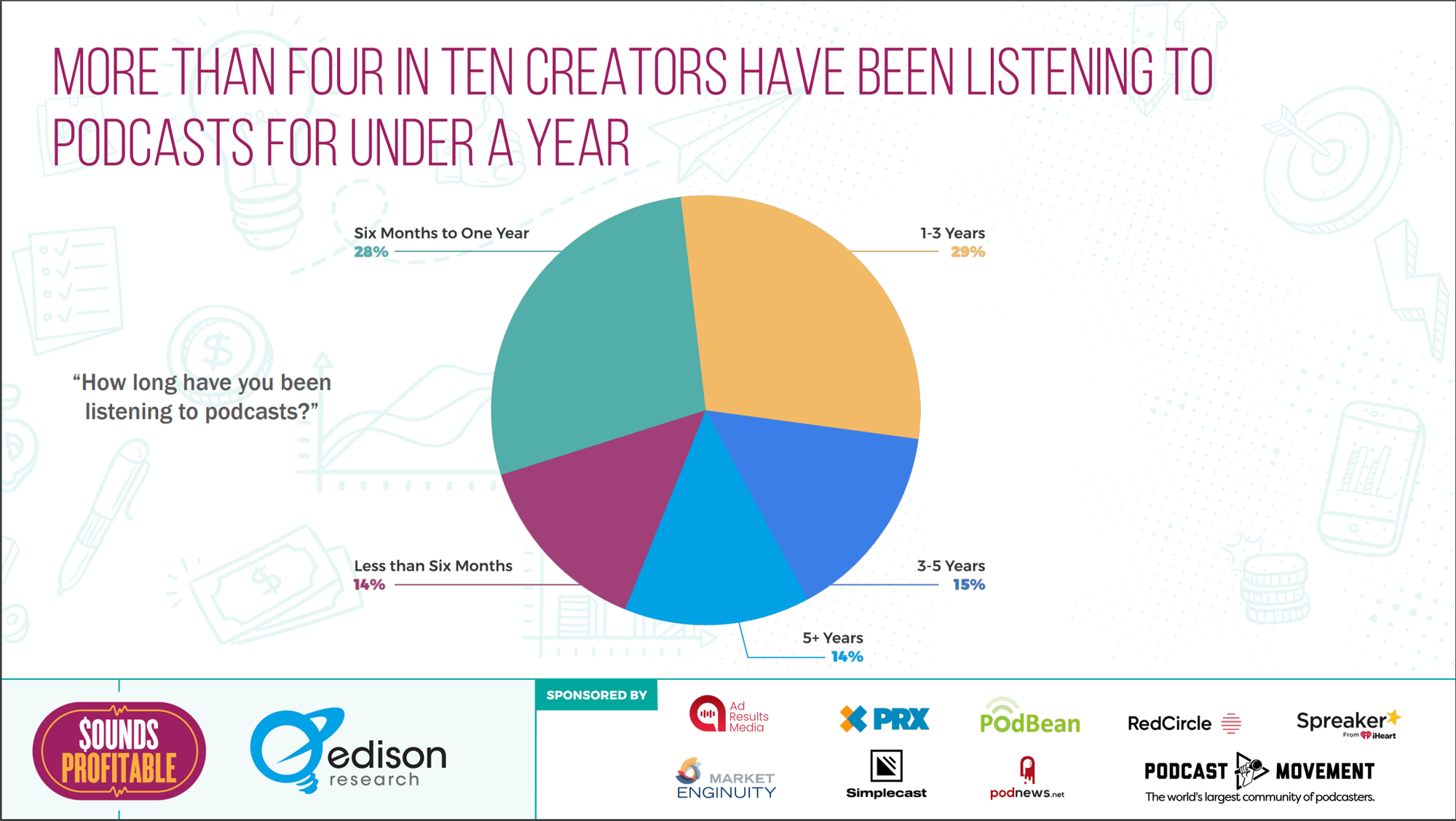
Intramedium Support
Cross-medium engagement among creators is higher than average: they not only engage with social media more than the general population, but tend to follow podcasts on these same sites. Over two-thirds of creators have financially supported another podcast in the last year. They’re also much more tolerant of and receptive to ads. Taken together, the implication is clear: podcast creators support each other.
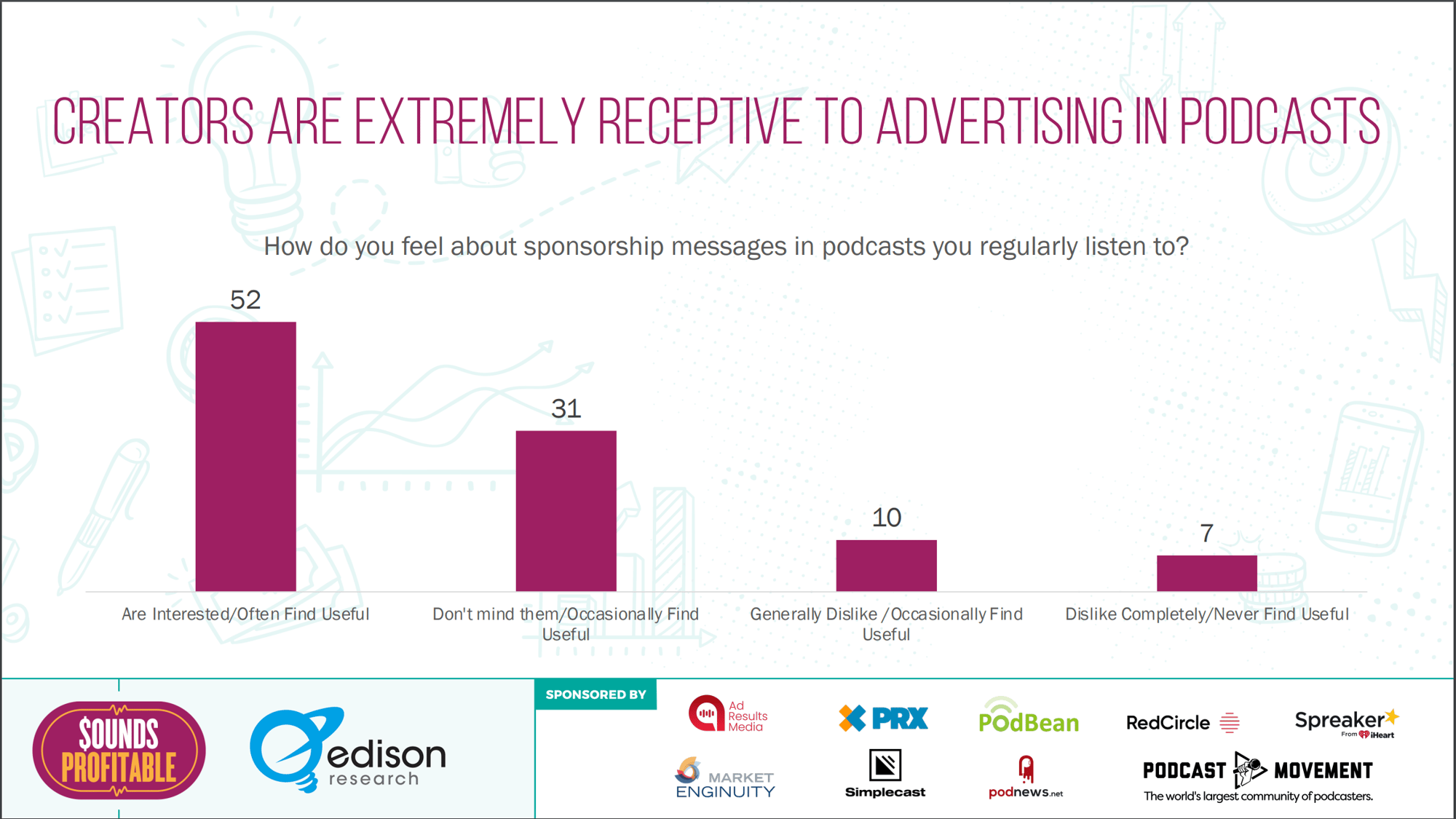
Along those lines, creators tend to have a lot of purchasing power for their workplaces. 80% said they are involved to some capacity with workplace purchases, and 86% of those said they have the financial responsibility to make those decisions. As the podcasting industry continues to grow and new creators continue to emerge, the engagement feedback cycle enables a rich creator “economy,” providing a cohort of listeners who could theoretically be depended on for greater consistent returns.
In Summary
This report is based on U.S. listener data and as such is only representative of the U.S. industry. It also uses existing data collected by Edison Podcast Metrics over the one-year period from 2021 to 2022; it is possible that certain realities have shifted over that time and that these findings are not an exact reflection of the current state. Still, “The Creators” surfaces valuable data and insights from a core demographic of podcast listeners during a time of crucial growth. Podcasts aren’t going anywhere. It’s time we understood the people behind them.
For those in the industry desiring to create a more equitable environment, identifying the existing privileges and biases among the creator population is a vital first step. The report suggests targeted efforts to empower older creators and creators from economically and educationally disadvantaged areas as a way to increase industry diversity and power the “economy” perpetuated by the observed cycle of creator support. As Sounds Profitable Partner Tom Webster puts it near the end of the seminar, “If any of those [new podcasts] only brings a literal handful of new listeners, this space is enriched.”
[Ed. 6/28/2022: This article was updated to include the graph presenting the gender comparison.]
[Ed. 6/29/2022: A previous version of this article mistakenly identified the income demographic as individual income. It has been corrected to state household income.]
Rashika Rao is a freelance audio critic from the American Midwest, with work at the Bello Collective, PocketCasts, and DiscoverPods, among others. You can find more of her writing at heard.work or on Twitter @asteraod.

